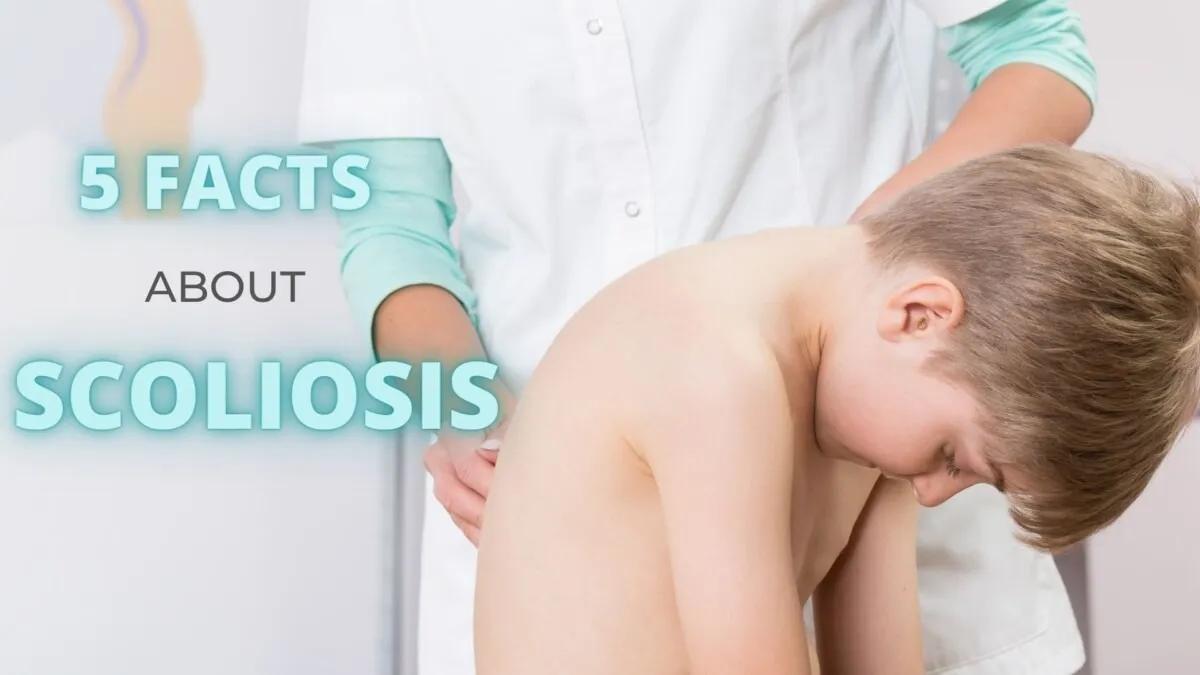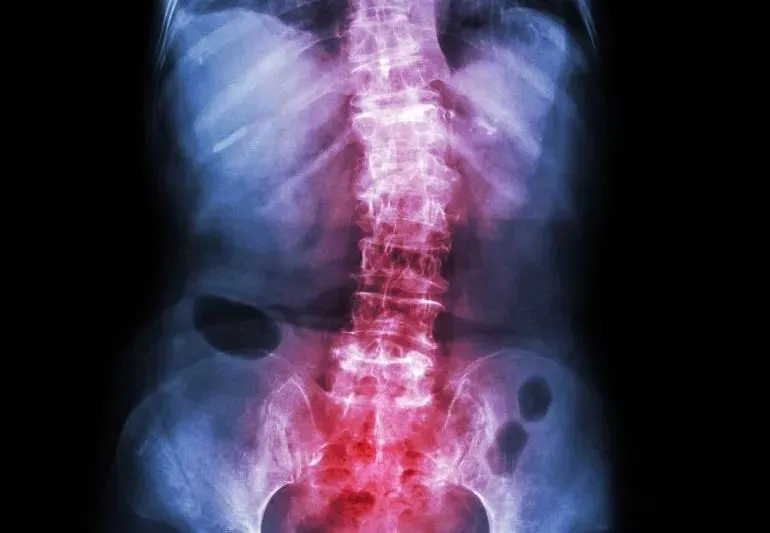When most people think of scoliosis, they envision children or teenagers with curved spines. However, scoliosis in adults is more common than you might realize, particularly among those aged 60 to 70. Let's dive into five eye-opening insights about adult scoliosis and explore its treatment options.
What Is Scoliosis In Adults?
Scoliosis, a condition marked by an abnormal curvature of the spine, can impact people at any stage of life. When it occurs in adults, it presents unique challenges and requires tailored approaches for management and treatment. Understanding facts about adult scoliosis helps in providing better care and improving quality of life.
Recognizing scoliosis in adults often starts with identifying key symptoms. Common indicators include back pain, uneven shoulders, and noticeable asymmetry in the rib cage. Adults might also experience fatigue, particularly after long periods of sitting or standing, due to the strain placed on the spine and surrounding muscles.
1. Facts About Adult Scoliosis: Two Types of Adult Scoliosis
Adult scoliosis comes in two primary forms: idiopathic and degenerative.
Idiopathic scoliosis, which has no known cause, often first appears in childhood or adolescence and can progress into adulthood.
On the other hand, degenerative scoliosis results from the natural wear and tear on the spine as we age, leading to curvature due to the deterioration of spinal discs and joints.
2. Facts About Adult Scoliosis: Surgical Treatments May Not Be Needed
Early diagnosis of scoliosis in adults is crucial for effective management. Diagnosis usually involves a thorough physical examination and imaging tests such as X-rays, MRI, or CT scans to determine the degree and type of spinal curvature. These assessments help in crafting a personalized treatment plan.
The approach to treating scoliosis in adults depends on the severity of the condition and the presence of symptoms. Here are common treatment strategies:
Non-Surgical Treatments
- Physical Therapy: Focuses on strengthening and stabilizing the spine to alleviate pain and improve posture.
- Bracing: Although more common in younger patients, braces can provide support in certain adult cases.
- Medications: Pain relievers and anti-inflammatory drugs can help manage discomfort and inflammation.
- Alternative Therapies: Acupuncture, chiropractic care, and massage therapy can offer relief for some individuals.
Surgical Treatments
When non-surgical methods do not provide sufficient relief, surgery may be considered. Procedures like spinal fusion can correct curvature and stabilize the spine. Advances in minimally invasive techniques have improved recovery times and outcomes for many patients.
3. Facts About Adult Scoliosis: Potential Health Complications
Severe scoliosis can lead to various health issues beyond spinal discomfort. These complications can include:
- Breathing Difficulties: A severely curved spine can compress the lungs.
- Nerve Damage: Abnormal curvature can put pressure on nerves, causing pain or numbness.
- Spinal Fluid Leakage: In severe cases, the spinal cord and surrounding tissues may be affected.
Additionally, smoking exacerbates these problems and contributes to the progression of scoliosis, emphasizing the importance of a healthy lifestyle.
4. Facts About Adult Scoliosis: Varied Symptoms
Symptoms of scoliosis in adults can range from mild to severe. Some individuals may not experience any noticeable symptoms, while others might suffer from:
- Lower Back Pain: Persistent pain and stiffness in the back.
- Fatigue: Muscle strain in the lower back and legs can lead to fatigue.
- Numbness and Pain: Shooting pains or numbness in the legs due to nerve compression.
- Muscle Cramping: Spinal curvature can lead to cramping and discomfort.
If these symptoms interfere with daily activities or mobility, it's crucial to seek medical advice. Diagnosis typically involves imaging tests such as X-rays, MRI, or CT scans to assess the spine's condition.
5. Facts About Adult Scoliosis: Degrees of Curvature are different in each person
The severity of scoliosis is measured by the degree of spinal curvature. This curvature can take an 'S' or 'C' shape and is classified as follows:
- Mild Curvature: Less than 20 degrees.
- Moderate Curvature: Between 25 and 40 degrees.
- Severe Curvature: More than 50 degrees.
Understanding the degree of curvature helps in determining the appropriate treatment plan. Regular monitoring is essential to track any changes in the spine's alignment over time.
Living with Scoliosis: Daily Management Tips
Managing scoliosis involves a holistic approach that encompasses lifestyle changes, regular exercise, and ongoing medical care. Here are some practical tips:
Exercise and Physical Activity
Engaging in low-impact exercises such as swimming, walking, and yoga can enhance spinal health and overall well-being. Regular physical activity helps maintain muscle strength and flexibility, which are crucial for supporting the spine.
Ergonomics and Posture
Adopting ergonomic principles in daily activities, whether at work or home, can significantly reduce strain on the spine. Using supportive chairs, adjusting desk heights, and practicing good posture can mitigate discomfort.
Nutrition and Bone Health
A balanced diet rich in calcium and vitamin D supports bone health, which is vital for individuals with scoliosis. Maintaining a healthy weight also reduces the load on the spine, preventing further curvature progression.
Emotional and Mental Health Considerations
Living with scoliosis can be challenging, not just physically but also emotionally. Support groups, counseling, and connecting with others who have the condition can provide valuable emotional support and practical advice. Addressing mental health is an essential component of comprehensive scoliosis care.
Conclusion
Scoliosis in adults is a complex condition that requires a multifaceted approach to treatment and management. By understanding 5 facts about adult scoliosis, its types, symptoms, and treatment options, individuals can better navigate their condition and improve their quality of life. Emphasizing a combination of medical interventions, lifestyle adjustments, and emotional support ensures a holistic approach to managing scoliosis effectively.
Visit Meme to stay up-to-date on life tips.
FAQs
1. How common is scoliosis in adults?
Scoliosis in adults is relatively common, particularly degenerative scoliosis, which develops due to spinal wear and tear with age.
2. Can scoliosis cause severe pain in adults?
Yes, scoliosis can cause significant pain in adults, especially if the curvature is severe or if it leads to other complications such as nerve compression.
3. Is surgery always necessary for adult scoliosis?
No, surgery is not always necessary. Many adults manage scoliosis successfully with non-surgical treatments like physical therapy and medications.
4. Can scoliosis in adults be prevented?
While idiopathic scoliosis cannot be prevented, maintaining good spinal health through exercise, proper posture, and a healthy lifestyle can help reduce the risk of developing degenerative scoliosis.
5. What lifestyle changes can help manage scoliosis in adults?
Regular exercise, ergonomic adjustments, a balanced diet, and weight management are crucial lifestyle changes that can help manage scoliosis effectively.
Maybe you are interested:

Is Rice Good For You? Everything You Need To Know

Explore The Real World Of Hospital Shift Work








